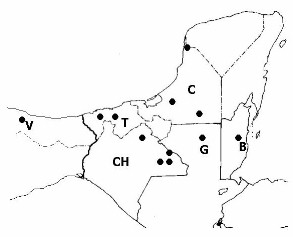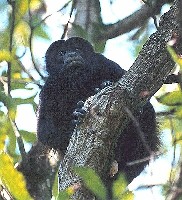|
PRIMATE RESEARCH IN SOUTHERN MEXICO Primate Laboratory Estación de Biología "Los
Tuxtlas", Instituto de Biología Universidad Nacional Autónoma de México |
|
||||
|
|||||
|
|
|||||
|
Research areas
encompassed with primates by our research team
POPULATION STUDIES ECOLOGY SOCIAL BEHAVIOR CONSERVATION
STUDIES USING NON INVASIVE TECHNIQUES |
|
|
PRIMATE LABORATORY As part of the infrastructure present at the field station Los Tuxtlas (see field station link in frontgpage), the primate laboratory houses computer facilities, our data banks, other scientifc equipment, a specialized library of books and reprints on primate studies, and storage for biological samples. The lab also provides working space for students and scientists that collaborate with us, and access to Internet is a recent addition. The lab is surrounded by rainforest and it is quite common for howlers and, sometimes, spider monkeys and other forest wildlife, to "hang around" the lab. |
|
|
For further information about the activities of the Primate Laboratory of the Estación de Biología "Los Tuxtlas", IB-UNAM, write to: [email protected] |
|
|
Links of interest Select here for Links to academic associations, data banks and other about primates Jobs http://www.naturejobs.com |
Copyright @ 2004 Alejandro Estrada



